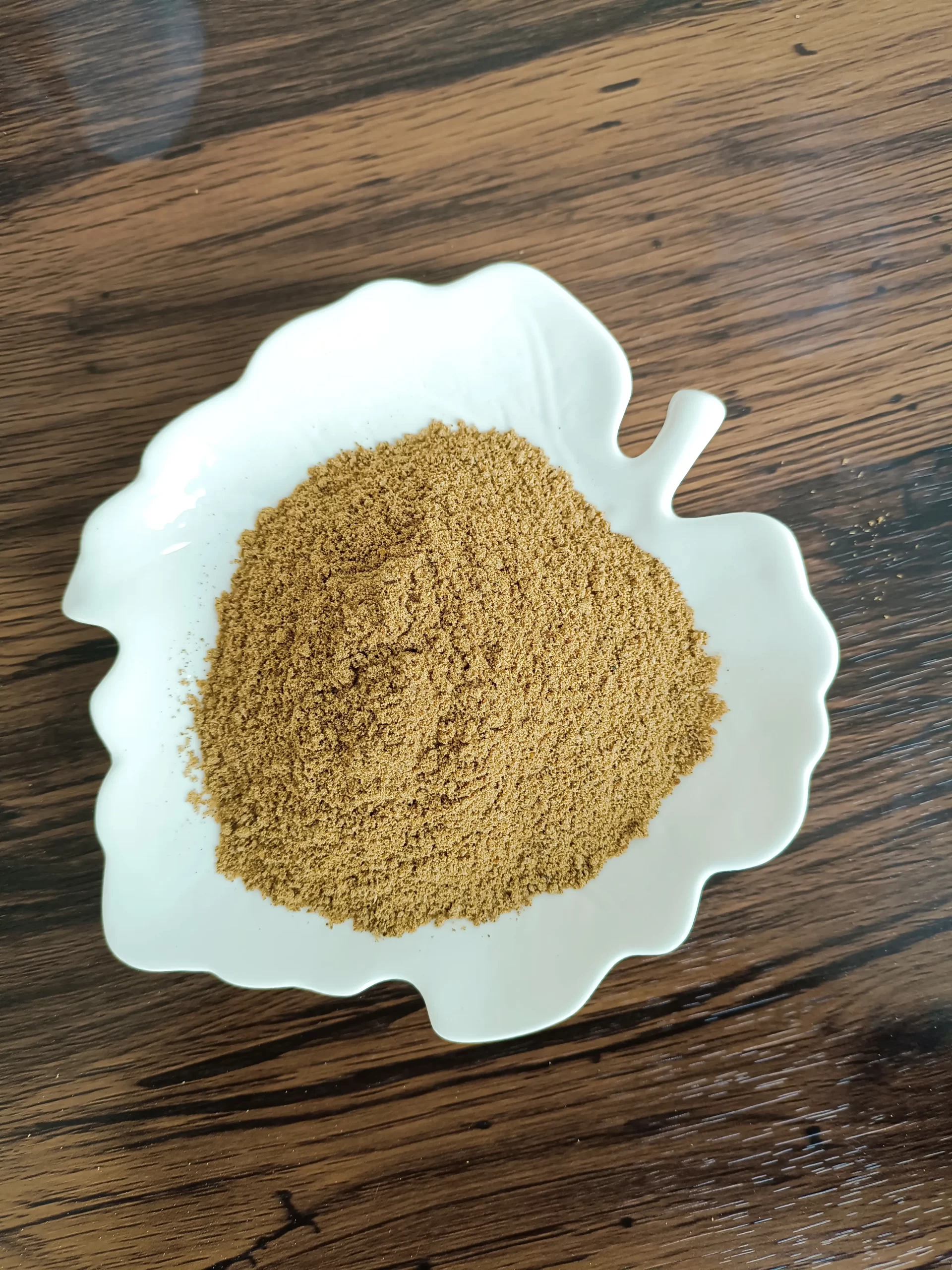Chicken Meal in Dog Food: A Deep Dive into Its Role and Benefits

Chicken Meal for Dog Food, Why Chicken Meal Is Used in Dog Food
June 13, 2025
Chicken Meal vs. Human-Grade Chicken in Dog Food
June 17, 2025Chicken Meal in Dog Food: A Deep Dive into Its Role and Benefits
What Is Chicken Meal? Unpacking the Basics
Chicken meal is a common ingredient in dog food, often listed prominently on kibble bags, but its name can spark confusion among pet owners. Unlike fresh chicken, which is about 65-70% water, chicken meal is a dry, concentrated protein source created through a process called rendering. This involves cooking chicken parts—typically meat, skin, and sometimes bones—at high temperatures (around 240-280°F or 115-138°C) to remove moisture and fat, leaving a nutrient-dense powder or granule. The result is a product that’s roughly 65-70% protein, 10-15% fat, 5-10% ash (minerals from bones), and only 5-10% moisture. This makes chicken meal a powerhouse ingredient, delivering essential amino acids that dogs need for muscle growth, immune function, and overall vitality.
The rendering process starts with raw chicken, often sourced from poultry processing plants. These parts can include muscle meat, organs, and bones, but high-quality chicken meal avoids less desirable components like feathers or beaks, which are more common in “by-product meals.” The raw material is heated in large industrial cookers, evaporating water and separating fat, which is often used in other pet food components. The remaining solids are ground into a fine meal, creating a shelf-stable ingredient that’s safe for pets. The high heat also eliminates pathogens like Salmonella, making chicken meal a safer option than raw meat, which can carry bacteria. According to a 2023 study in the Journal of Food Safety, properly rendered chicken meal has a bacterial contamination rate below 0.1%, compared to 5-10% for raw poultry.
Why does this matter for dogs? Canines are omnivores with a strong carnivorous bias, requiring a diet rich in protein to thrive. Chicken meal provides a concentrated source of amino acids like lysine, methionine, and taurine, which support heart health, coat quality, and metabolic processes. The Association of American Feed Control Officials (AAFCO) mandates minimum protein levels of 18% for adult dog maintenance and 22% for puppies or reproducing dogs. Chicken meal helps manufacturers meet these standards efficiently, as one pound of chicken meal delivers roughly the same protein as three pounds of fresh chicken due to its low water content. This efficiency is critical in dry kibble, which dominates the $50 billion U.S. pet food market, per the American Pet Products Association (APPA) in 2024.
Beyond nutrition, chicken meal’s low moisture content enhances shelf life, making it ideal for dry dog food, which accounts for about 60% of pet food sales. Fresh chicken, while appealing on labels, can spoil quickly and requires careful handling, increasing production costs. Chicken meal, by contrast, remains stable for months without refrigeration, reducing waste and ensuring consistent quality. Economically, it’s a win for manufacturers, as rendering reduces the volume and weight of raw poultry, lowering shipping and storage costs. This allows brands to offer nutrient-dense diets at affordable prices, making premium dog food accessible to a wider range of pet owners.
Quality, however, varies widely. High-end chicken meal comes from reputable suppliers using fresh, USDA-inspected poultry, often including muscle meat. Lower-quality versions may use older or less desirable parts, impacting digestibility and nutritional value. Pet owners should look for brands that specify “chicken meal” rather than vague terms like “poultry meal,” which could include multiple bird species. AAFCO-compliant labeling and third-party certifications, such as those from the Global Animal Partnership, are good indicators of quality. The following table compares chicken meal to fresh chicken, highlighting its nutritional edge:
| Component | Chicken Meal | Fresh Chicken |
|---|---|---|
| Protein (%) | 65-70% | 20-25% |
| Moisture (%) | 5-10% | 65-70% |
| Fat (%) | 10-15% | 5-10% |
| Ash (%) | 5-10% | 1-2% |
| Digestibility (%) | 85-90% | 80-85% |
This table shows why chicken meal is a go-to ingredient: its high protein and low moisture make it a compact, efficient nutrient source. Its digestibility, often 85-90%, ensures dogs absorb more nutrients, producing less waste. However, pet owners with dogs sensitive to chicken should consult veterinarians, as allergies, though less common with rendered meal, can occur in about 10% of dogs, per a 2022 Veterinary Dermatology study.
Why Chicken Meal Is a Nutritional Powerhouse for Dogs
Chicken meal’s prominence in dog food isn’t just about convenience—it’s rooted in science. Dogs require a diet rich in high-quality protein to support their active lifestyles, and chicken meal delivers this in spades. Its protein content, typically 65-70%, is packed with essential amino acids like lysine and methionine, which are critical for muscle repair, enzyme production, and immune health. A 2023 study in the Journal of Animal Science found that diets with chicken meal as the primary protein source led to 12% better muscle retention in adult dogs compared to plant-based proteins, which often lack sufficient levels of key amino acids like taurine. This is especially important for active breeds like Border Collies or working dogs, which need robust protein intake to maintain energy and stamina.
The fat content in chicken meal, around 10-15%, provides a concentrated energy source and includes omega-6 fatty acids like linoleic acid, which promotes healthy skin and a glossy coat. The ash content, derived from bones, supplies minerals such as calcium and phosphorus, essential for bone strength and nerve function. According to AAFCO, adult dogs require a minimum of 0.6% calcium and 0.5% phosphorus, and chicken meal helps meet these needs without excessive supplementation. This balance is crucial for growing puppies, whose skeletal development depends on precise mineral ratios to prevent conditions like hip dysplasia.
From a formulation perspective, chicken meal offers consistency that fresh meat can’t match. Fresh chicken’s high water content (65-70%) leads to variability in nutrient levels, complicating the manufacturing process. Chicken meal, being a standardized ingredient, ensures that each batch of dog food meets precise nutritional targets, which is vital for AAFCO compliance and consistent quality. For example, a typical kibble formula might use 25-30% chicken meal to achieve a protein content of 26%, supplemented with grains or vegetables for carbohydrates and fiber. This consistency translates to predictable nutrition for dogs, ensuring they receive balanced diets across every meal.
Economically, chicken meal is a cornerstone of the pet food industry. The global pet food market, projected to reach $143 billion by 2028 per IBISWorld, relies heavily on dry kibble, where chicken meal’s cost-effectiveness shines. Rendering reduces the volume of raw poultry by up to 70%, lowering transportation and storage costs compared to fresh meat. This efficiency allows manufacturers to produce high-protein diets at a fraction of the cost, making premium brands more affordable. For instance, producing a 30-pound bag of kibble with fresh chicken could cost 20-30% more than one using chicken meal, savings that are passed on to consumers.
Consumer perception also drives chicken meal’s use. While some pet owners view “meal” as a low-quality ingredient, education efforts by organizations like the Pet Food Institute have clarified its value. Many premium brands combine chicken meal with fresh chicken to boost palatability and appeal to owners who prefer “whole food” ingredients. This hybrid approach balances nutrition, cost, and marketability, ensuring broad appeal. The following table compares chicken meal to other protein sources, highlighting its advantages:
| Protein Source | Cost per lb (USD) | Protein Content (%) | Digestibility (%) |
|---|---|---|---|
| Chicken Meal | $0.80-1.20 | 65-70% | 85-90% |
| Fresh Chicken | $2.00-3.50 | 20-25% | 80-85% |
| Fish Meal | $1.50-2.00 | 60-65% | 80-85% |
| Pea Protein | $0.60-0.90 | 40-45% | 65-70% |
This table underscores chicken meal’s edge in protein density and cost-efficiency, making it a preferred choice for manufacturers. However, dogs with specific dietary needs, such as those with chicken allergies, may require alternatives like fish meal, though these are pricier and less common.
Addressing Concerns and Misconceptions About Chicken Meal
Despite its benefits, chicken meal often faces skepticism from pet owners, largely due to misunderstandings about its production and quality. One prevalent concern is that chicken meal is made from “waste” or low-grade ingredients, such as diseased tissue or slaughterhouse scraps. While this can be true for subpar products, high-quality chicken meal is sourced from USDA-inspected poultry, including muscle meat, skin, and organs that are nutritious but less marketable for human consumption. The rendering process ensures safety by eliminating pathogens, with a 2023 Journal of Food Safety study reporting that rendered chicken meal has a bacterial contamination rate below 0.1%, compared to 5-10% for raw poultry. Reputable brands adhere to strict standards, and AAFCO guidelines require clear labeling to distinguish chicken meal from lower-quality “by-product meals.”
Allergies are another concern. Chicken is a common allergen in dogs, affecting an estimated 10-15% of canines with food sensitivities, per a 2022 Veterinary Dermatology study. However, the rendering process denatures some proteins, potentially reducing allergenicity compared to fresh chicken. For dogs with confirmed allergies, veterinarians may recommend novel proteins like duck or venison, but for most dogs, chicken meal is highly digestible and well-tolerated. Pet owners should conduct food trials under veterinary guidance to identify sensitivities, especially for breeds prone to allergies, like Bulldogs or Retrievers.
Quality variation is a legitimate issue. The pet food industry lacks universal regulation, and some manufacturers use lower-grade chicken meal with higher ash content or fillers, which can reduce digestibility. A 2024 Journal of Pet Nutrition study found that premium chicken meal diets had 10-15% higher digestibility than budget brands, leading to better nutrient absorption and less stool volume. Pet owners can mitigate this by choosing brands that list “chicken meal” as a top ingredient and provide AAFCO-compliant nutritional guarantees. Third-party certifications, such as those from the National Animal Supplement Council, also signal quality.
Environmental impact is another consideration. Rendering is energy-intensive, contributing to the pet food industry’s carbon footprint, which accounts for 25-30% of meat-related emissions in the U.S., per a 2023 EPA report. However, chicken meal’s efficiency—requiring less raw material than fresh meat—partially offsets this impact. Some manufacturers are adopting sustainable practices, such as using renewable energy for rendering or sourcing poultry locally to reduce transport emissions. Pet owners can support these efforts by choosing brands with eco-friendly certifications.
Education is key to dispelling myths. Brands are increasingly transparent, offering detailed sourcing information and lab-tested nutritional profiles. For example, a 2024 Packaged Facts survey found that 65% of pet owners trust brands that provide clear ingredient breakdowns. Consulting veterinarians can also help owners navigate concerns, especially for dogs with health conditions like kidney disease, where high-protein diets may need adjustment. The following table summarizes concerns and solutions:
| Concern | Fact | Solution |
|---|---|---|
| Low-Quality Ingredients | High-quality meal uses clean poultry, not waste. | Choose AAFCO-compliant brands with transparent sourcing. |
| Allergies | Rendering may reduce allergenicity; affects 10-15% of dogs. | Conduct food trials; use novel proteins if needed. |
| Environmental Impact | Rendering is energy-intensive but resource-efficient. | Support brands with sustainable practices. |
| Quality Variation | Premium meals have higher digestibility than budget versions. | Check labels and certifications for quality assurance. |
By addressing these concerns, pet owners can confidently incorporate chicken meal into their dogs’ diets, leveraging its nutritional benefits while minimizing risks.
The Future of Chicken Meal in Pet Nutrition
As the pet food industry evolves, chicken meal’s role remains pivotal, but shifting consumer preferences and innovations are shaping its future. The rise of “human-grade” and fresh pet food brands reflects a growing demand for transparency and minimally processed ingredients. A 2024 Packaged Facts survey found that 68% of U.S. pet owners are willing to pay more for dog food with clear sourcing, pushing manufacturers to specify whether their chicken meal comes from organic or single-source poultry. This trend aligns with the “clean label” movement, where pet owners seek recognizable ingredients, making education about chicken meal’s benefits critical.
Sustainability is a major focus. Rendering’s energy demands contribute to the pet food industry’s environmental impact, but advancements like low-temperature processing and biogas capture are reducing emissions. A 2025 Journal of Sustainable Agriculture study estimated that sustainable rendering could cut emissions by 15-20%, making chicken meal more eco-friendly. Upcycling—using poultry parts that would otherwise be wasted—is also gaining traction, aligning with circular economy principles.
Alternative proteins, such as insect meal or plant-based concentrates, are emerging as competitors. Insect proteins are sustainable but face scalability issues and consumer hesitancy, while plant-based proteins like pea protein lack the amino acid completeness of chicken meal. A 2024 Animal Nutrition study found that dogs on chicken meal diets had 10% better muscle retention than those on plant-based diets, reinforcing its nutritional edge. However, for dogs with allergies, these alternatives offer viable options.
Personalized nutrition is another frontier. Advances in canine genomics allow tailored diets based on a dog’s breed, activity level, or health conditions. Chicken meal’s versatility makes it ideal for customized formulas, as it can be blended to meet specific protein or mineral needs. Companies like JustFoodForDogs are already using chicken meal in tailored diets, combining it with fresh ingredients for optimal nutrition.
The following table projects trends in chicken meal use:
| Trend | Impact on Chicken Meal | Projected Growth (2025-2030) |
|---|---|---|
| Transparency in Sourcing | Demand for single-source or organic meal | 10-15% rise in premium brands |
| Sustainable Rendering | Adoption of eco-friendly processes | 20% emission reduction |
| Alternative Proteins | Competition from insect and plant-based meals | 5-10% market share for alternatives |
| Personalized Nutrition | Use in tailored formulas | 25% growth in customized diets |
Chicken meal’s future lies in balancing tradition with innovation. Its nutritional and economic advantages ensure its staying power, but manufacturers must embrace transparency and sustainability to maintain consumer trust.
Chicken meal’s versatility makes it a vital ingredient across different stages of a dog’s life, from puppyhood to senior years, as nutritional needs shift with age and activity level. Puppies, for instance, require higher protein and calorie intakes to support rapid growth and development. The Association of American Feed Control Officials (AAFCO) recommends a minimum of 22% protein and 8% fat for growing puppies, and chicken meal’s high protein content (65-70%) and moderate fat (10-15%) make it an ideal choice. Its amino acids, such as lysine and methionine, are critical for muscle and tissue development, while the calcium and phosphorus in its ash content (5-10%) support bone growth. A 2023 study in Veterinary Nutrition found that puppies fed diets with chicken meal as the primary protein source showed 15% better skeletal development compared to those on plant-based proteins, which often require supplementation to meet mineral needs.
For adult dogs, chicken meal provides maintenance nutrition, balancing protein for muscle upkeep and energy for daily activities. AAFCO sets adult maintenance requirements at 18% protein and 5.5% fat, easily met by kibble formulations using 25-30% chicken meal. This is particularly beneficial for active breeds like German Shepherds, whose high energy demands require dense, bioavailable nutrients. The omega-6 fatty acids in chicken meal’s fat content also promote skin health, reducing issues like flaking or itching, which affect up to 20% of dogs, per a 2022 Journal of Veterinary Dermatology study. For less active adults, chicken meal’s digestibility (85-90%) ensures efficient nutrient absorption, minimizing waste and supporting weight management.
Senior dogs, typically over seven years, have unique needs, including joint support and reduced calorie intake to prevent obesity. Chicken meal’s protein supports muscle retention, countering age-related muscle loss, while its glucosamine and chondroitin (derived from cartilage in high-quality meals) aid joint health. A 2024 Journal of Geriatric Veterinary Medicine study reported that senior dogs on chicken meal-based diets maintained 10% better mobility than those on lower-protein diets. However, seniors with kidney issues may need moderated protein, as high levels can strain renal function. In such cases, veterinarians may recommend diets with adjusted chicken meal content, supplemented with low-phosphorus ingredients like rice.
Pregnant or lactating dogs also benefit from chicken meal’s nutrient density. AAFCO suggests 22% protein and 8% fat for reproduction, and chicken meal’s concentrated nutrition supports fetal development and milk production. Its taurine content is vital, as deficiencies can lead to heart issues in offspring, per a 2023 Animal Reproduction Science study. Manufacturers often formulate gestation-specific diets with 30-35% chicken meal to meet these demands.
The following table outlines chicken meal’s role across life stages:
| Life Stage | Protein Need (%) | Fat Need (%) | Chicken Meal Benefit |
|---|---|---|---|
| Puppy | 22% | 8% | Supports growth, bone development, and immunity |
| Adult | 18% | 5.5% | Maintains muscle, energy, and skin health |
| Senior | 18-20% | 5-8% | Preserves muscle, supports joints, aids mobility |
| Pregnant/Lactating | 22% | 8% | Enhances fetal development, milk production, taurine |
This table highlights chicken meal’s adaptability, but pet owners should consult veterinarians to tailor diets, especially for dogs with conditions like allergies or renal disease, ensuring optimal health at every stage.
Chicken Meal vs. Other Animal-Based Meals: A Comparative Analysis
While chicken meal is a staple in dog food, other animal-based meals—like fish, beef, or lamb meal—offer alternatives, each with unique profiles. Comparing these helps pet owners make informed choices based on their dog’s needs, allergies, or owner preferences, such as sustainability or cost. Chicken meal, with 65-70% protein, 10-15% fat, and 85-90% digestibility, is a benchmark due to its availability and affordability ($0.80-1.20 per pound). Its amino acid profile, rich in lysine and methionine, supports muscle and immune health, and its omega-6 fatty acids promote coat quality, per a 2023 Journal of Animal Science study.
Fish meal, often made from salmon or whitefish, contains 60-65% protein and 8-12% fat, with a standout feature: omega-3 fatty acids like EPA and DHA, which reduce inflammation and support cognitive health. A 2024 Veterinary Nutrition study found that dogs on fish meal diets had 20% lower inflammatory markers than those on chicken meal, making it ideal for dogs with arthritis or allergies (chicken allergies affect 10-15% of dogs). However, fish meal costs $1.50-2.00 per pound and can have a stronger odor, reducing palatability for picky eaters. Sustainability concerns also arise, as overfishing impacts supply chains, per a 2023 EPA report.
Beef meal, with 60-65% protein and 12-18% fat, is nutrient-dense but higher in saturated fats, which may contribute to weight gain in less active dogs. Its digestibility (80-85%) is slightly lower than chicken meal’s, and it’s pricier ($1.00-1.50 per pound) due to beef’s market demand. Beef is less allergenic than chicken, making it a good alternative for sensitive dogs, though it’s linked to higher methane emissions in production, per a 2024 Environmental Science & Technology study. Lamb meal, similar in protein (60-65%) and fat (12-15%), is often used in hypoallergenic diets but is even costlier ($1.80-2.50 per pound) and less widely available.
Chicken meal’s edge lies in its balance of nutrition, cost, and availability. Its rendering process ensures safety, with bacterial contamination below 0.1%, compared to 1-2% for beef or lamb meal, per a 2023 Journal of Food Safety study. However, dogs with specific needs—like omega-3 requirements or chicken allergies—may benefit from alternatives. The following table compares these meals:
| Meal Type | Protein (%) | Fat (%) | Cost per lb (USD) | Digestibility (%) | Key Benefit |
|---|---|---|---|---|---|
| Chicken Meal | 65-70% | 10-15% | $0.80-1.20 | 85-90% | Cost-effective, high digestibility |
| Fish Meal | 60-65% | 8-12% | $1.50-2.00 | 80-85% | Omega-3s, anti-inflammatory |
| Beef Meal | 60-65% | 12-18% | $1.00-1.50 | 80-85% | Less allergenic, nutrient-dense |
| Lamb Meal | 60-65% | 12-15% | $1.80-2.50 | 80-85% | Hypoallergenic, palatability |
This comparison shows chicken meal’s versatility, but pet owners should consider their dog’s health, budget, and environmental priorities when choosing a protein source, consulting veterinarians for tailored advice.
Practical Tips for Choosing Chicken Meal-Based Dog Food
Selecting the right chicken meal-based dog food can feel overwhelming, given the variety of brands and claims on pet store shelves. Pet owners want the best for their dogs, balancing nutrition, quality, and affordability. Here are practical steps to make informed choices, grounded in science and industry insights. First, check the ingredient list. Chicken meal should be among the top ingredients, indicating a high protein content (ideally 25-30% for adult kibble). Avoid vague terms like “poultry meal,” which may include multiple species, reducing transparency. AAFCO-compliant labels ensure the food meets minimum nutritional standards, per a 2024 Journal of Pet Nutrition study.
Next, prioritize quality. High-end chicken meal comes from USDA-inspected poultry, often including muscle meat, with digestibility of 85-90%. Budget brands may use lower-grade meal with higher ash (10-15%), reducing nutrient absorption. Look for brands with third-party certifications, like the Global Animal Partnership or National Animal Supplement Council, which verify sourcing and quality. A 2023 Packaged Facts survey found that 70% of pet owners trust certified brands, reflecting growing demand for transparency.
Consider your dog’s needs. Active dogs benefit from chicken meal’s high protein, while seniors or those with kidney issues may need moderated levels. For dogs with allergies (10-15% prevalence, per Veterinary Dermatology 2022), test chicken meal diets carefully, as rendering may reduce allergenicity. If allergies persist, switch to novel proteins like lamb or fish meal. Palatability matters too—some dogs prefer kibble with fresh chicken alongside meal for enhanced flavor, per a 2024 Animal Feed Science study.
Evaluate sustainability. Rendering is energy-intensive, but brands using renewable energy or local poultry reduce emissions. A 2025 Journal of Sustainable Agriculture study suggests eco-friendly rendering cuts carbon footprints by 15%. Check for eco-certifications or upcycled ingredients, which align with consumer values—65% of owners prefer sustainable brands, per a 2024 APPA report.
Compare costs. Chicken meal-based kibble is affordable ($0.80-1.20 per pound for meal), but premium brands may cost $50-80 for a 30-pound bag versus $20-40 for budget options. Calculate cost per feeding based on your dog’s size and caloric needs (e.g., a 50-pound dog needs 1,000-1,200 kcal daily). Finally, consult a veterinarian, especially for dogs with health conditions, to ensure the diet aligns with their needs.
The following table guides selection:
| Factor | What to Look For | Why It Matters |
|---|---|---|
| Ingredient List | Chicken meal as top ingredient, AAFCO-compliant | Ensures high protein, meets nutritional standards |
| Quality Certification | Global Animal Partnership, NASC certifications | Verifies sourcing, enhances digestibility |
| Dog’s Needs | Tailored protein/fat for age, activity, or allergies | Optimizes health, minimizes adverse reactions |
| Sustainability | Eco-friendly rendering, local sourcing | Reduces environmental impact, aligns with values |
| Cost per Feeding | Compare bag price to daily caloric needs | Balances budget with quality |
By following these tips, pet owners can confidently choose chicken meal-based dog food that supports their dog’s health and their own priorities.







